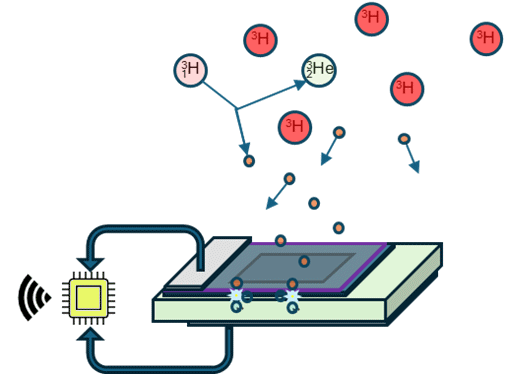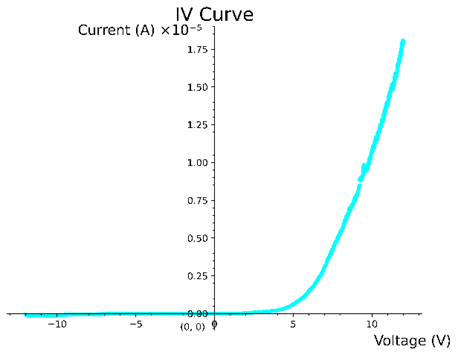 Diamond-based Tritium Detectors
Diamond-based Tritium Detectors
|
Tritium (the radioactive heavy isotope of hydrogen) is used as the fuel in nuclear fusion reactors. However it is rare, expensive and difficult to produce. Moreover, being radioactive (a beta-emitter), it is dangerous if it escapes from containers into the air, and this is even more problematic because tritium is notoriously difficult to detect reliably. Therefore, there is a pressing need for a technology that can detect tritium reliably and reproducibly over long periods of time. One possibility is to use a diamond-based voltaic sensor, which comprises a thin-film vertical-diode structure that is configured to be sensitive to the decays of low-energy beta-emitting radioisotopes impinging on the sensor surface. Diamond is 'radiation-hard', which means it can be exposed to a very large dose of radiation before becoming significantly damaged. Thus, a diamond-based tritium detector should have a very long lifetime. |
 Conceptual image of a STRIDES diamond-based sensor linked via COTS electronics to a wireless network providing real-time monitoring of radioactive gases. |
 Dark-current voltage characteristic for STRIDES PIN diode. |
This research seeks to develop and to demonstrate a highly novel diamond-based tritium-detector technology that can be deployed in the fusion fuel-delivery system, as well as the fusion-reactor walls to monitor tritium use and migration in real time. This research is funded by the UKAEA’s Fusion Industry Programme, project title STRIDES - Studying Tritium in Diamond Energy Structures. The project has so far demonstrated a single-crystal diamond sensor responding to simulated tritium beta-decays using an in-house designed COTS detector electronics module. |
